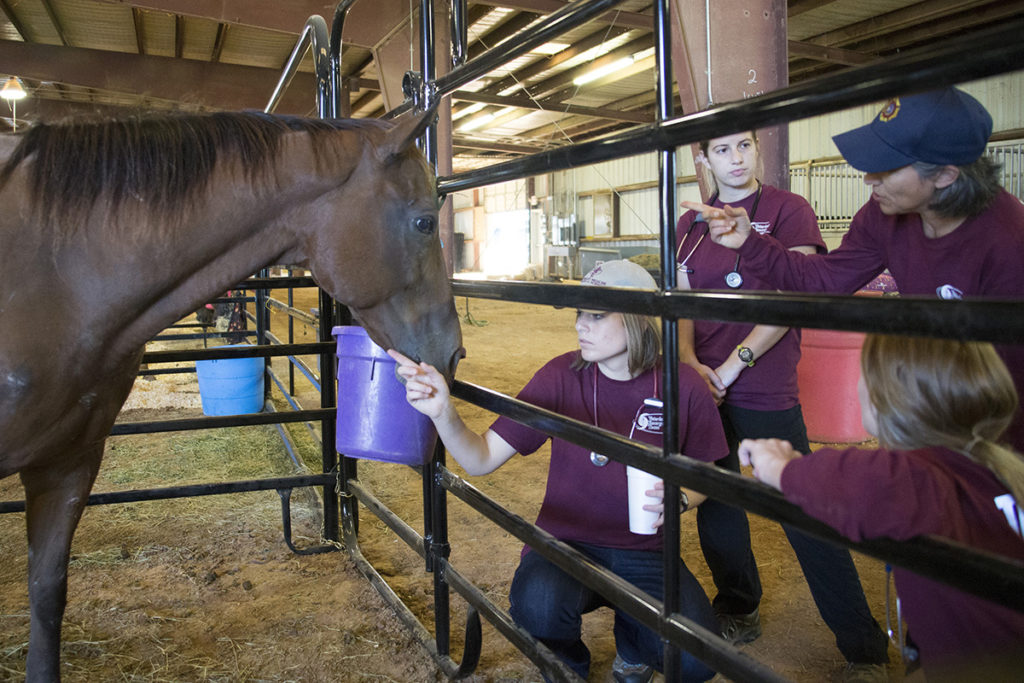Big Animals Require Big Plans: Preparing Herds And Large Animals For Disasters

Preparation is always key in any type of emergency response, but this is especially true when taking care of large animals in a disaster situation. Unlike household pets, which can usually be relatively quickly and easily transported, moving large animals can take time, which is usually in short supply during a disaster.
According to Dr. Wesley Bissett, director of the Texas A&M College of Veterinary Medicine & Biomedical Sciences’ Veterinary Emergency Team, there are several things to prepare and practice when it comes to show animals and horses.
“A simple one is just making sure your animal is trained to load into a trailer,” Bissett said. “Time is going to be the major factor in getting you and your animals to safety, and you don’t want the first time you’re loading an animal to be in that situation.”
Another tip from Bissett is to create a “go kit” inside waterproof containers that includes three to five days’ worth of food and water and at least two weeks’ worth of medications, as well as first aid supplies, cleaning supplies, and extra lead ropes, halters, and blankets.
“Resources could be scarce immediately following a disaster, so making sure you have at least several days’ worth of supplies ready to go can make a huge difference,” he said.
It’s also important to have copies of your animal’s medical records (and Coggins papers for horses) and a way to identify the animal, such as having them freeze-branded or microchipped, in case you’re separated.
“If you have to temporarily house your animal in an emergency shelter, having those medical records and identification methods will make the process significantly smoother,” Bissett said.
For livestock herds, preparation is even more important because of the number of animals that can be involved.
“A big key for preparing a livestock herd is just being aware of what parts of the property will usually flood first,” Bissett said. “Where are the low-lying areas? What parts of the property get cut off from others? Every disaster is different, but this will at least help you determine potential evacuation routes and where to place food and equipment so that you aren’t trying to make those decisions in the moment.”
Evacuating a herd and positioning food and equipment will take a significant amount of time, so Bissett recommends having a formal written evacuation timeline and sticking to it if it looks like a disaster could be approaching.
“One of our natural tendencies in disaster situations is to wait as long as we can in the hope that we don’t have to do anything,” he said. “But when you’re talking about a large number of large animals, food, and equipment, if you wait too long, it could be too late. You need to have an idea of how long the process is going to take.”
A disaster situation for a large animal herd could mean more than just natural disasters, though, and Bissett said the VET can help ranchers make continuity of operations plans.
“Having a good biosecurity plan in case of an infectious disease outbreak can make a huge difference in how impacted your operation is,” he said. “A good biosecurity plan can not only help minimize infections to the herd but even allow you to continue operations during an outbreak.”
Finally, for all kinds of disasters and whether you have one show animal of several thousand head, Bissett said to be familiar with the local emergency management offices and plans.
“Getting to know your local animal control offices, veterinarians and emergency veterinarians, county AgriLife agents, and other people in your local emergency management will help not only prepare you for disaster but could also allow you to help others,” he said. “In times of disaster, people will come together and help, but you need a plan on how you’re going to communicate and coordinate resources or you could create even more problems.”
Pet Talk is a service of the College of Veterinary Medicine & Biomedical Sciences, Texas A&M University. Stories can be viewed on the web at vetmed.tamu.edu/news/pet-talk. Suggestions for future topics may be directed to editor@cvm.tamu.edu.


